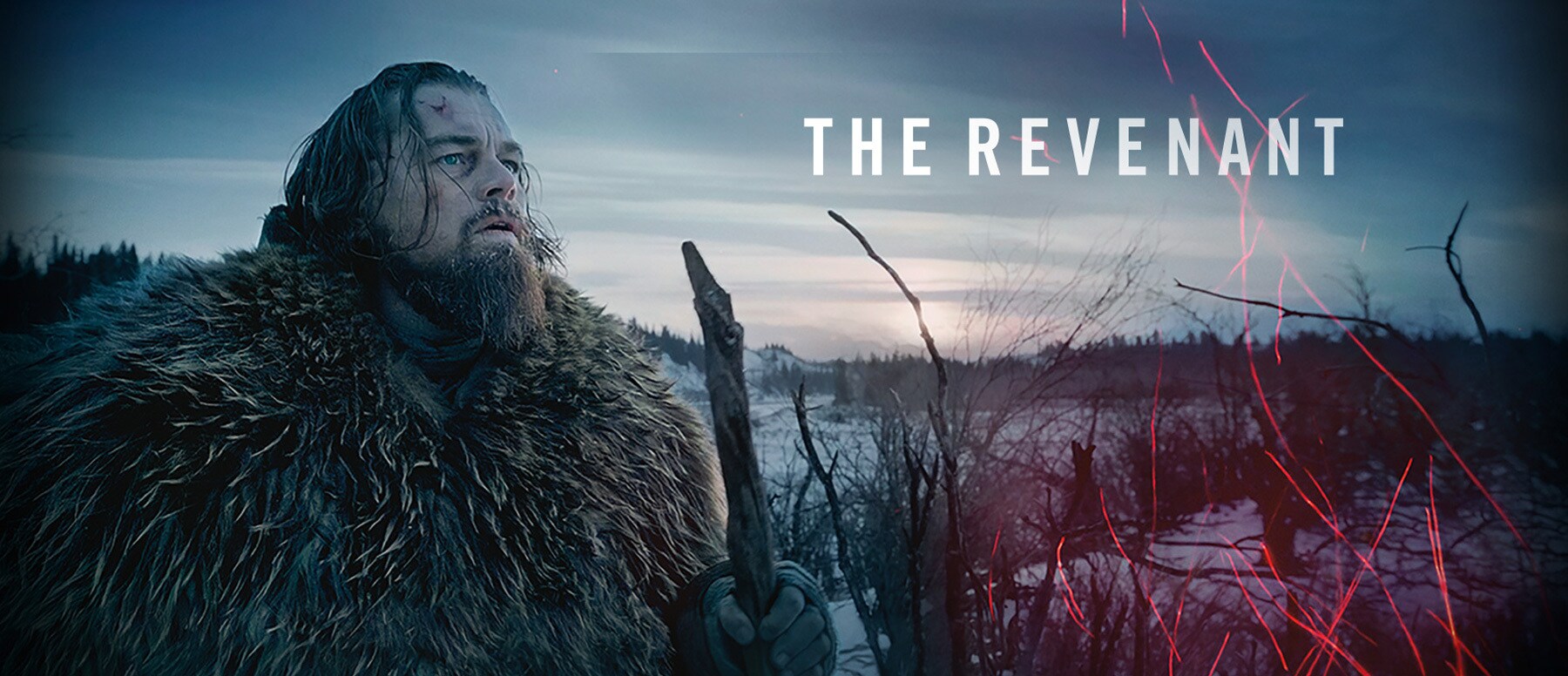
The Revenant is a critically acclaimed movie that has garnered widespread attention and praise since its release. Directed by Alejandro González Iñárritu and starring Leonardo DiCaprio, the film takes viewers on an epic journey into the wilderness of the 19th-century American frontier. Based on true events, The Revenant follows the story of legendary explorer Hugh Glass as he embarks on a treacherous quest for revenge after being left for dead by his companions. With its stunning cinematography, gripping storyline, and powerful performances, The Revenant has become a cinematic masterpiece. In this article, we will delve into 38 fascinating facts about the making, reception, and impact of The Revenant that will further enhance your appreciation for this remarkable film.
Key Takeaways:
- The Revenant” is an epic adventure film based on the true story of Hugh Glass, featuring intense survival scenes, stunning cinematography, and Leonardo DiCaprio’s award-winning performance.
- The movie’s production faced extreme challenges, but the result is a visually captivating and emotionally gripping cinematic experience that showcases the resilience of the human spirit.
The Revenant is a 2015 American epic adventure film directed by Alejandro González Iñárritu.
The film is based on the true story of Hugh Glass, a frontiersman who fights for survival in the 1820s American frontier.
Leonardo DiCaprio won his first Academy Award for his performance in The Revenant.
DiCaprio’s portrayal of Hugh Glass earned him the Oscar for Best Actor. He also won a Golden Globe and a BAFTA for the role.
The movie was filmed in some of the harshest conditions imaginable.
Director Alejandro González Iñárritu and his team endured freezing temperatures and remote locations to capture the authentic look and feel of the wilderness.
The Revenant was inspired by a novel of the same name written by Michael Punke.
Punke’s book tells the story of Hugh Glass and served as the basis for the screenplay.
The film features stunning cinematography by Emmanuel Lubezki.
Lubezki’s work on The Revenant earned him his third consecutive Academy Award for Best Cinematography.
The bear attack scene in The Revenant was created using a combination of CGI and practical effects.
The sequence took months to plan and execute, resulting in a truly intense and realistic moment in the film.
The Revenant was shot using only natural light.
Director of Photography Emmanuel Lubezki relied on natural lighting conditions to capture the raw beauty of the landscapes.
Tom Hardy gives a powerful performance as the antagonist, John Fitzgerald.
Hardy’s portrayal of the treacherous Fitzgerald earned him critical acclaim and a nomination for Best Supporting Actor at the Academy Awards.
The Revenant had a long and arduous production process.
The film faced numerous challenges, including extreme weather conditions and logistical issues in remote locations.
The Revenant was a commercial and critical success.
The film grossed over $500 million worldwide and received positive reviews from critics, praising its performances and visual effects.
The Revenant holds the record for the highest number of Academy Award nominations for a film shot entirely in the wilderness.
The film received 12 nominations, including Best Picture, Best Director, and Best Actor.
The movie’s intense and visceral scenes made it a memorable cinematic experience.
The Revenant captivated audiences with its immersive storytelling and breathtaking action sequences.
The Revenant showcases the resilience of the human spirit.
Hugh Glass’ journey of survival and revenge serves as a testament to the indomitable human will.
The film explores themes of revenge, redemption, and the harsh realities of the frontier era.
The Revenant delves into the darker aspects of human nature and the lengths one will go to in order to survive.
Leonardo DiCaprio underwent intense physical challenges for his role.
DiCaprio endured freezing temperatures, ate raw bison liver, and learned some Native American languages to fully immerse himself in the character.
The Revenant showcases the beauty of the natural world.
The film’s stunning cinematography captures the untamed landscapes of the wilderness, emphasizing the contrast between the brutality of survival and the serenity of nature.
The Revenant was praised for its realistic portrayal of Native American culture.
The film consulted with Native American advisors to ensure accurate representation and respectful treatment of indigenous peoples.
The Revenant features a haunting and atmospheric score composed by Ryuichi Sakamoto and Alva Noto.
The music adds another layer of intensity and emotion to the film’s gripping narrative.
The film’s production design and costume design were meticulously researched and executed.
Every detail, from the authentic clothing to the realistic set pieces, contributed to the film’s immersive and visually stunning world.
The Revenant showcases the power of human connection in the face of adversity.
The relationships between characters, particularly the bond between Hugh Glass and his son, provide emotional depth to the story.
The movie’s release sparked a renewed interest in the real-life story of Hugh Glass.
Many people were inspired to learn more about the historical figure and his incredible tale of survival.
The Revenant was praised for its attention to detail in depicting the historical era.
Costumes, weapons, and architecture were all meticulously researched and recreated to transport viewers to the frontier era.
The film’s screenplay was co-written by Alejandro González Iñárritu and Mark L. Smith.
The collaboration resulted in a powerful and nuanced script that brought the story to life.
The Revenant showcases the brutality of the fur trade industry in the 1820s.
The film does not shy away from depicting the harsh realities and violence of the era.
The movie’s title, “The Revenant,” refers to a person who has returned from the dead or a long absence.
This resonates with the story of Hugh Glass, who overcomes insurmountable odds to seek revenge.
The film’s editing, done by Stephen Mirrione, enhances the sense of tension and urgency.
The rapid pace and seamless transitions keep the audience on the edge of their seats.
The Revenant features a diverse and talented cast.
In addition to Leonardo DiCaprio and Tom Hardy, the film also stars Domhnall Gleeson, Will Poulter, and Forrest Goodluck.
The Revenant was a physically demanding film to make.
The cast and crew endured grueling conditions and challenging stunts to bring the story to life.
The movie’s exploration of nature and man’s relationship with the wilderness resonated with audiences.
The Revenant reminds us of the awe-inspiring power of nature and the impact humans have on the environment.
The Revenant won three Academy Awards in total.
In addition to Leonardo DiCaprio’s Best Actor win, the film also received Oscars for Best Director and Best Cinematography.
The Revenant received critical acclaim for its realistic portrayal of survival in the wilderness.
The film’s attention to detail and immersive storytelling transported viewers into the harsh and unforgiving world of 19th-century frontier life.
The Revenant’s production team included many experienced wilderness experts.
These experts helped ensure the safety of the cast and crew during the challenging filming process.
The film’s success helped bring attention to Alejandro González Iñárritu as a visionary director.
Iñárritu’s unique storytelling style and attention to detail were recognized and celebrated by both critics and audiences.
The Revenant showcases the resilience and determination of the human spirit.
The film’s protagonist, Hugh Glass, serves as an inspiring example of survival and perseverance against all odds.
The movie’s use of silence and minimal dialogue creates a visceral and immersive experience.
The absence of constant chatter allows the natural sounds of the environment to take center stage, enhancing the film’s realism.
The Revenant is a visually stunning film that captivates the viewer from start to finish.
Each frame is carefully composed, resulting in a cinematic masterpiece that showcases the beauty and brutality of the wilderness.
The film’s success paved the way for more exploration of historical and survival-themed movies.
The Revenant’s impact on the film industry can be seen in subsequent releases that tackle similar themes and settings.
The Revenant is a must-watch film that combines breathtaking visuals, powerful performances, and a compelling story.
Its gripping narrative and immersive experience make it a standout movie in the adventure genre.
So, there you have it – 38 fascinating facts about the movie “The Revenant”. From its grueling production process to its award-winning performances, this film has left an indelible mark on cinema history. Whether you’re a fan of intense survival stories, stunning cinematography, or simply looking for a captivating movie, “The Revenant” is definitely worth watching.
Conclusion
In conclusion, The Revenant is a visually stunning and emotionally intense film that captivated audiences around the world. With its incredible performances, breathtaking cinematography, and gripping storyline, it is no wonder that the movie was widely acclaimed and received numerous accolades. The dedication and commitment of the cast and crew, led by director Alejandro González Iñárritu, brought this harrowing tale of survival to life in a way that resonated with audiences.The Revenant pushed the boundaries of filmmaking with its use of natural lighting and immersive shooting locations, creating a visceral and authentic viewing experience. The performances of Leonardo DiCaprio and Tom Hardy were nothing short of extraordinary, with DiCaprio earning his first Academy Award for his portrayal of Hugh Glass.The movie serves as a testament to the indomitable human spirit and the will to survive against all odds. The Revenant is a masterpiece in every sense of the word and a must-watch for any movie enthusiast.
FAQs
1. Is The Revenant based on a true story?
Yes, The Revenant is based on a true story. It is inspired by the life of Hugh Glass, an American frontiersman, explorer, and fur trapper, who survived a bear attack and sought revenge against those who left him for dead.
2. How many Academy Awards did The Revenant win?
The Revenant won a total of three Academy Awards, including Best Actor for Leonardo DiCaprio, Best Director for Alejandro González Iñárritu, and Best Cinematography for Emmanuel Lubezki.
3. How long did it take to film The Revenant?
The filming of The Revenant took approximately nine months, primarily due to the challenging shooting locations and the use of natural lighting.
4. Did Leonardo DiCaprio really eat a raw bison liver?
Yes, Leonardo DiCaprio ate a raw bison liver for a particular scene in the movie to make it more authentic and realistic.
5. How much money did The Revenant gross at the box office?
The Revenant grossed over $532 million worldwide, making it a commercial success.
6. Who composed the music for The Revenant?
The music for The Revenant was composed by Ryuichi Sakamoto, Alva Noto, and Bryce Dessner.
7. Are there any sequels or prequels planned for The Revenant?
As of now, there are no official plans for sequels or prequels to The Revenant.
If you enjoyed learning about The Revenant, why not explore other fascinating films and topics? Immerse yourself in the powerful historical drama of The Passion of Joan of Arc, discover the unique aspects of Frontier Airlines, or gain valuable survival knowledge. Each subject offers a captivating journey that will leave you informed and inspired.
Was this page helpful?
Our commitment to delivering trustworthy and engaging content is at the heart of what we do. Each fact on our site is contributed by real users like you, bringing a wealth of diverse insights and information. To ensure the highest standards of accuracy and reliability, our dedicated editors meticulously review each submission. This process guarantees that the facts we share are not only fascinating but also credible. Trust in our commitment to quality and authenticity as you explore and learn with us.


